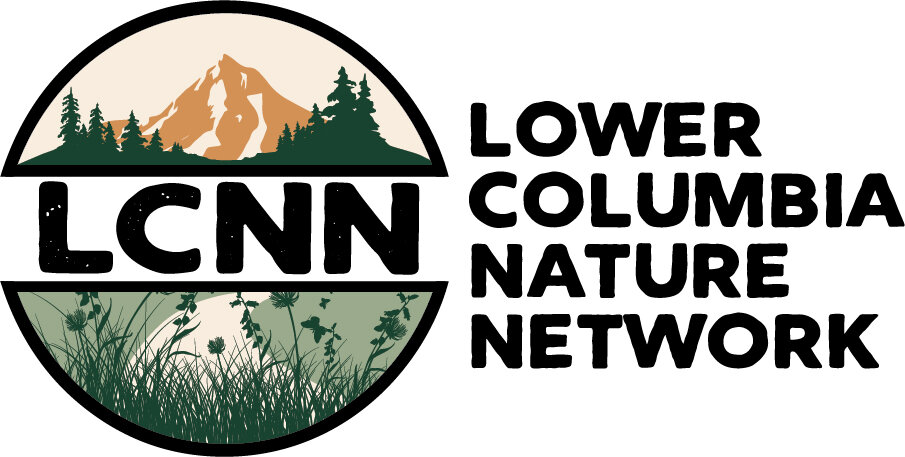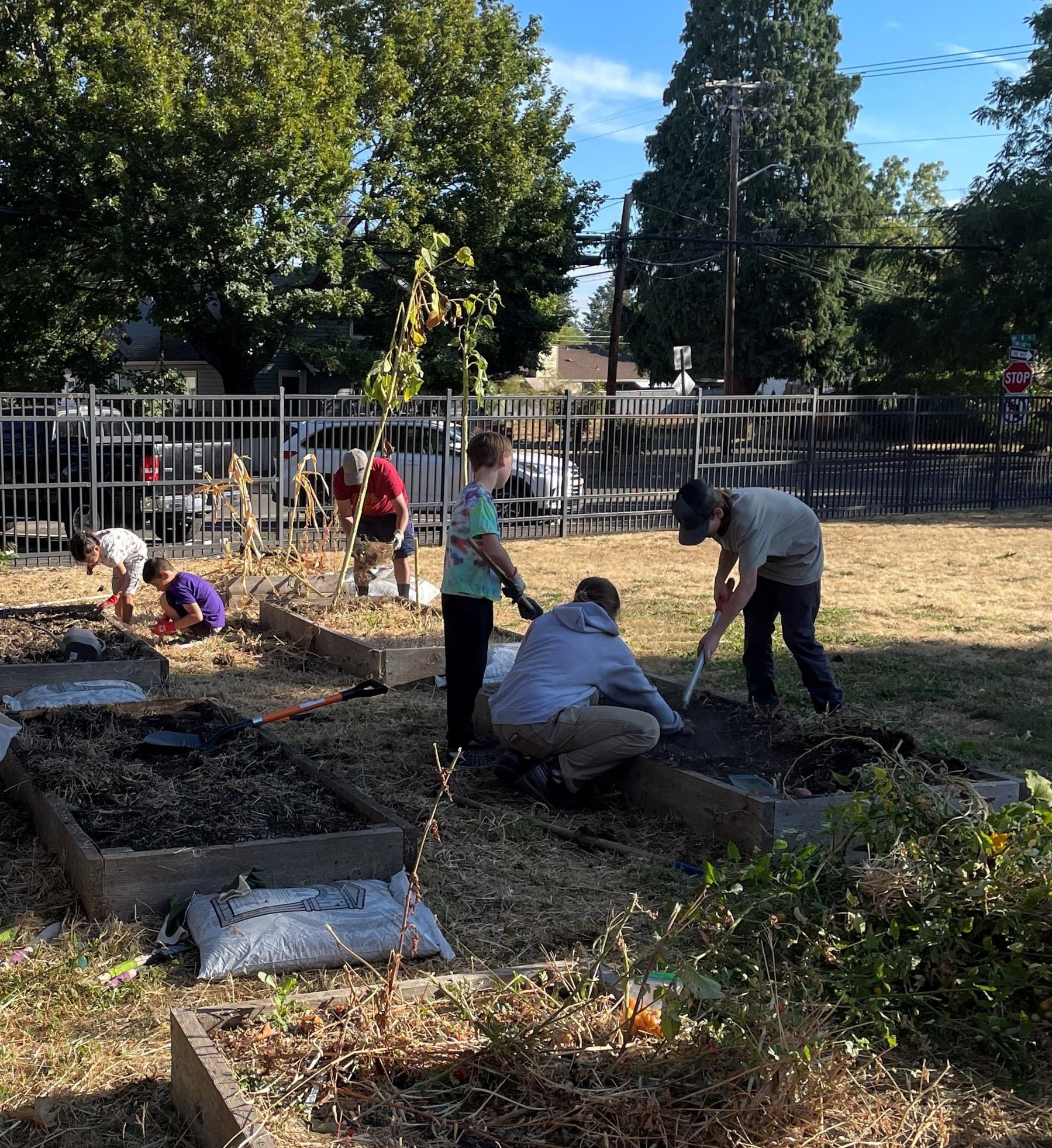Preparing the School Garden for Winter & Open School Garden Tour October 18
Guest post by Bekah Marten, School Garden Coordinator, Clark County Master Gardener Program
Bekah can be reached at rebekah.marten@wsu.edu. More into on the WSU Master Gardener website.
Late in September, a group of staff, students and parents at Washington Elementary School got a jump start on their garden clean up. They arrived early on a Saturday morning and removed plants that had finished for the season, spread new soil and planted a few fall vegetables and flowers. Once the leaves on campus begin to fall, they will rake some of them up and use them as mulch.
Fall is a great time to get outside with students and get your garden beds ready for winter. Preparing your garden for winter is simply the process of removing some of the spent vegetation and covering the soil with a mulch. This is a great practice for your garden space because it prevents soil borne diseases, aids in weed suppression, keeps nutrients from leaching out of the soil during heavy winter rains, and prevents soil erosion. But all of this work is great for your students too because it gets them moving outside, and it helps them to see the full seasonal cycle of the gardens.
Fall clean up is best done in mid-fall or following your first frost. Begin by cutting any annual flowers and vegetables to the ground and adding the leaves/stems to your compost bins. You can leave the roots in the soil as they will decompose over winter and add organic matter back to the soil. Consider leaving some perennial flower seed heads, stems and leaves on the plants as a winter food and habitat for local wildlife. Some examples of this would be coneflowers, sedums, and rudbeckia.
This is a great time to replace soil in your beds if the soil level has become compacted or decrease due decomposition of organic matter. If your beds started with a bulk mix that included sand, avoid adding another mix containing sand as the sand in these mixes does not decompose and can lead to having too high of a ratio of sand in your beds. Read the ingredients on the bagged mix or ask at your local landscape supply for the ingredients.
Once your beds are refilled, you will want to mulch them to help suppress weeds over the winter. Hand your students some rakes and have them rake up leaves from area trees to be used as a mulch on beds. Other great options would be untreated grass clippings, or compost. Spread the mulch at a depth of 4-6 inches. These materials all have the added benefit of adding nutrients back into the soil as well.
Come learn more about this topic and others at the next Open School Garden Tour October 18th!



